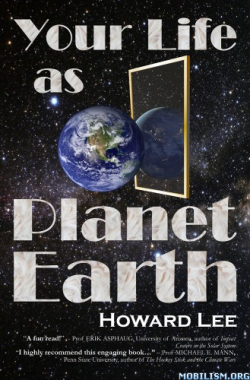
Geology can be a fun subject, but it’s not often that we find it written about that way. Howard Lee has risen to the challenge by imagining that Earth was like a human with a 100-year life span.
In its teens, Earth’s face was pockmarked by acne – from the impacts of asteroids and comets. At 40 years old, its archaean organisms had merged with bacteria to form the first eukaryotic cells. At 46, primitive organisms had started to fill its atmosphere with a new gas, oxygen. Earth was an ancient 88 year-old by the start of the Cambrian, 540 million years ago.
On its 90th birthday land plants invented wood, enabling them to stand upright. They sucked CO2 out of the air, lowering temperature and triggering a brief ice age some 458 million years ago. By the time Earth was 91, fish begin to walk on land. When it was 92, giant coal swamps sucked enough CO2 out of the air to create a further glaciation some 30 million years long, spanning the Carboniferous-Permian boundary. At age 93, giant eruptions in Siberia spewed enough gases into the air over a long enough period to wipe out 90% of living species.
Not long afterwards, when Earth was 95-96, the Pangaean supercontinent broke apart, and giant dinosaurs roamed the surface, only to die off when a giant meteor hit Mexico as Earth turned 98. Earth turned 99 in the middle of a muggy Eocene epoch, after which the central heating failed, CO2 fell, and ice grew again. By the end of November in Earth’s last year, proto-humans appeared, and as December progressed, the northern hemisphere was beset by ice. Yet at 9.45 pm on Earth’s 100th birthday a warm snap arrived with the Holocene epoch.
In Part 2, Lee takes the reader through how things work: drifting continents; plate tectonics; evolution; missing links; dating rocks; antique meteorites and their impacts; the ups and downs of mountains; dating humans; thermometers for times past; ancient climates and what drove them. Signs of past times even include plant and animal remains encased in crystallised urine in packrat middens.
The record of past climates makes clear the role of plate tectonics as a source of CO2, and the role of chemical weathering of silicates in mountains as a sink for it. CO2 can indeed lead temperature change. But it did not within the Ice Age, when Earth’s orbital fluctuations changed temperature, which drove changes in CO2. Where are we now? The orbit has Earth in a cold phase, but our climate is warm. Our emissions of greenhouse gas explain that divergence. It’s not the sun, which is in decline.
The message Lee pulls from the rock record is much the same as that in the Society’s climate change statement. His story is very well documented, supported with 885 references. I highly recommend it for anyone with a mildly scientific background as well as old dogs like me who have forgotten most of the geology they were taught.
Reviewed by Colin Summerhayes, Scott Polar Research Institute, Cambridge.
YOUR LIFE AS PLANET EARTH by HOWARD LEE, 2014. E-book, ISBN: 978-0-9766137-1-8 (available from ylape.com and Amazon – Kindle edition £7.66).